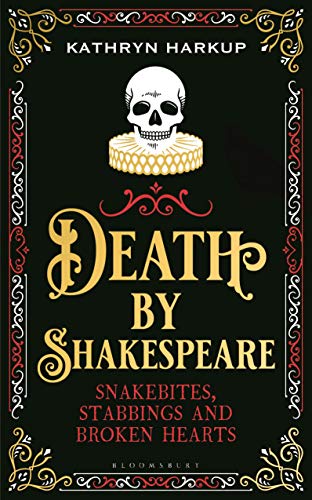Death By Shakespeare: Snakebites, Stabbings and Broken Hearts
Executions, strangulations, poisonings, disease, beheadings, snakebites, stabbings. These are just a few of the MOs employed by William Shakespeare to dispatch more than 250 characters in his plays and sonnets. Grist for author Dr. Kathryn Harkup’s mill.
Harkup is a chemist and science communicator who has written about the context and science behind Agatha Christie’s poisonings in A is for Arsenic, which was shortlisted for the International Macavity Award and BMA Book Award. Most recently, she tackled the science and quackery associated with Mary Shelley’s Frankenstein in Making the Monster.
Death by Shakespeare chronicles common practices and experiences in Shakespeare’s day, providing fascinating details about poisons and public executions, among other causes of death. She notes, for instance, that the same product was sold as a cosmetic, medicine, and poison as well as the ways felons could avoid the death penalty and the grisly, sometimes hit-or-miss methods of carrying it out. She also reveals an important exception. Although plagues and other infectious diseases were prevalent in Tudor-era London, Shakespeare avoids them as causes of theatrical death, most likely, Harkup believes, because of their ubiquitous presence and the fear they engendered.
Harkup’s research leads her to conclude that Shakespeare was knowledgeable about forensics, the emerging science of blood circulation, and the private habits of the dying at the end of their time. It also offers insights on deaths in Shakespeare’s family and mortal risks faced by stage players as well as theater goers.
Well-written and intriguing, the book provides a rich behind-the-scenes look at science and historical fact, using the focus on death to deepen understanding of Shakespeare’s life and work. Hereby hangs a tale.










